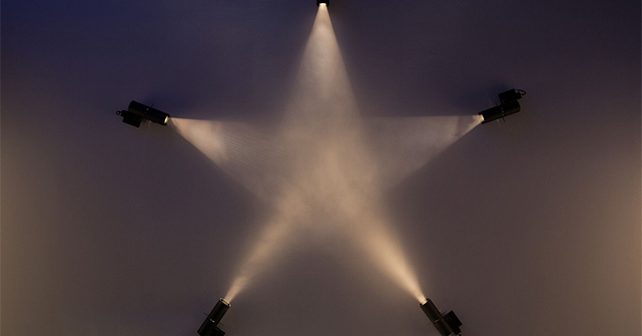

Freak Star n°2, 2005. Ann Veronica Janssens – Collection FRAC Bourgogne – Photo courtesy of National Museum of Singapore, NHB
Imagine walking into the National Museum of Singapore and being confronted by outdoor environments such as a mound of lush grass, or a beach inviting you for a tan? How about unexpectedly having artwork appear in front and around you, or actually being part of the final puzzle piece to an installation? These are among the experiences visitors will encounter at What Is Visible Is Not Invisible – Featuring selected artworks from the French Regional Collections of Contemporary Art (FRAC), the latest contemporary art exhibition at the National Museum of Singapore, and a parallel project of the Singapore Biennale 2016.
What Is Not Visible Is Not Invisible presents over 30 artworks by French and international artists from FRAC, one of the most important public collection of contemporary art founded in 1982 and anchored by 23 institutions across all the regions in France. The show is curated in collaboration with Platform, the network of FRACs, and marks the first time that this selection of the collection is being presented in Asia Pacific.
An Experience for the Mind and Senses
What is Not Visible is Not Invisible broadly surveys the imaginary and the temporary, and takes visitors on an experiential and progressive journey of the mind and senses through the artworks specially selected from FRAC’s collection of 26,000 works. Through the use of unconventional approaches in art-making, the exhibition of multi-media installations invites new ways of perception and brings each visitor into a new state of mind through personal interpretations of the presentations, its surrounding space, and context.
The title and design of What is Not Visible is Not Invisible takes inspiration from the artwork of the same title by French artist Julien Discrit, which walks the line between physical and philosophical. At first glance, three infrared lightbulbs are strung from the ceiling in front of an unassuming blank wall. When triggered by the viewer’s presence, the bulbs light up to reveal the ultraviolet text on the wall: “What is not visible is not invisible”. The work only appears when it is seen, highlighting that to express the invisible, one needs to paradoxically have to make it visible.
The visual paradox initiated in this modest yet profound works sets the premise for the themes and artworks that visitors will engage with at the exhibition. Artworks such as Grass Grows by Hans Haacke where a mound of grass greets visitors to the exhibition, and Repulse Bay by Dominique Gonzalez-Foerster, where a beach is recreated indoors instantly captures the audiences’ attention through the displacement of what is expected to be outdoors, suddenly appearing indoors. The recreation of environments in unassuming spaces creates new perspectives and transports visitors into a new state of mind.
A Showcase of Pioneer Contemporary Artists
What Is Not Visible Is Not Invisible is an opportunity to be acquainted with prominent contemporary artists of our time – pioneers who pushed boundaries to set the scene for we know today. For example, visitors will be presented the much-celebrated Work No. 262 by British multimedia artist Martin Creed, an installation that engages with the mind and senses as it invites visitors into a space of balloons, to contemplate and respond to the idea of the physical space. Martin Creed is most known for his controversial Turner Prize-winning piece Work No 227: The lights going on and off – in which an empty room with lights flickers on a timer – which made international headlines.

Martin Creed, Work n°262, Half the Air in a Given Space, 2001, Installation, Green Latex Balloons, Dimensions variable, Collection of FRAC LANGUEDOC ROUSSILLON
Dates: 7 October 2016 to 19 February 2017
Venue: Exhibition Galleries, Basement, National Museum of Singapore
Hours: Opens 10am to 7pm, daily except Thursdays | Opens 1pm to 7pm, Thursdays






